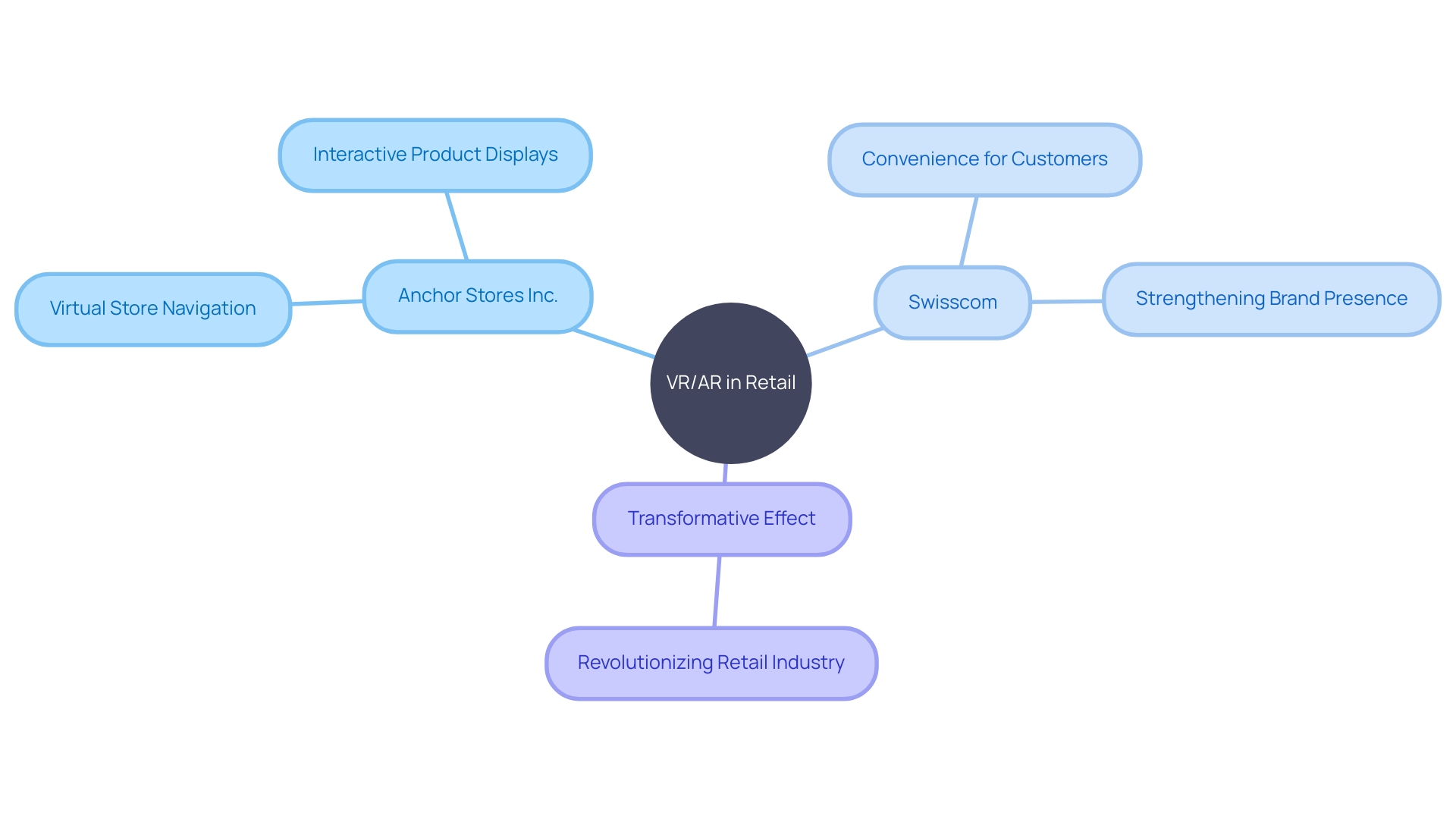Introduction
Navigating the aisles of a grocery store can often be a frustrating experience, with crowded spaces, difficult-to-find items, and limited product information. This inefficiency is exemplified by the pricing strategies for perishable goods like bananas, where profit margins can dwindle due to markdowns and waste.
These challenges are driving a shift in consumer behavior towards online grocery shopping. To address these issues, innovative retailers are turning to futuristic technologies such as virtual reality (VR) and augmented reality (AR).
By incorporating VR/AR into their stores, they provide customers with an immersive and convenient shopping experience. This article explores how VR/AR technologies are revolutionizing grocery retail and highlights the success of Anchor Stores Inc., a leading grocery retail chain, in implementing these technologies to enhance customer engagement. Through virtual replicas of their physical stores and interactive product displays, Anchor Stores Inc. has improved efficiency, customer satisfaction, and sales. The implementation of VR/AR technologies is transforming the grocery shopping experience and positioning retailers as industry leaders in providing convenience and enhanced product information.
The Problem: Inefficient Grocery Shopping Experiences
Navigating the aisles of a grocery store can often lead to a less-than-ideal shopping experience. Shoppers are confronted with the daunting task of weaving through crowded spaces, searching for items that may be difficult to locate, and contending with limited information on products. A striking example of inefficiency is seen in the pricing strategies for perishable goods like bananas.
At a Food Lion in Virginia, bananas showcase the tightrope walk of profit margins, where an expected 40% gain is whittled down to a mere 15% due to markdowns and eventual waste from unsold stock. This reflects a broader issue where stores grapple with losses not just from unsold produce, but also from the associated waste management costs. These retail challenges are driving a significant shift in consumer behavior.
According to a comprehensive survey of over 2,000 US consumers, there has been a notable increase in the proportion of individuals purchasing groceries online, from 2018 to 2024. The survey, conducted on April 8, 2024, reveals an upward trend in both past online grocery purchases and intentions for future online shopping. This pivot towards digital platforms is a testament to the evolving landscape of grocery retail, where convenience, efficiency, and enhanced product information are becoming paramount.

The Solution: Implementing Futuristic Technologies
To address the inefficiencies of traditional grocery shopping experiences, innovative retailers have started leveraging VR/AR technologies. By incorporating virtual and augmented reality into their stores, they are able to provide customers with a unique and immersive shopping experience. This technology allows customers to navigate through the store virtually, visualize products in a realistic manner, and access detailed information about each item.
Case Study: Anchor Stores Inc.'s Transformation
Anchor Stores Inc., a leading grocery retail chain, embarked on a transformational journey to revolutionize the grocery shopping experience. They recognized the potential of VR/AR technologies to enhance customer engagement and decided to implement these futuristic technologies in their stores. Through strategic partnerships with VR/AR developers, Anchor Stores Inc. successfully integrated virtual and augmented reality elements into their physical stores.
Strategies and Initiatives for Enhanced Shopping
In a bid to revolutionize the retail landscape, Anchor Stores Inc. has embraced the power of VR/AR technology with remarkable strategies. By crafting virtual replicas of their physical stores, they've provided customers with an intuitive navigation experience through digital aisles. This innovative approach not only simplifies the search for products but also brings a level of convenience akin to the familiarity of their local store.
Further enhancing the immersive experience, Anchor Stores Inc. introduced interactive product displays. Customers can now engage with items in a virtual space, examining nutritional information and receiving tailored recommendations. This aligns with the successful initiative by Swiss telecom giant Swisscom, who harnessed AR to strengthen their brand presence in the competitive Swiss market, particularly resonating with the tech-savvy under-40 audience.

Key Results and Outcomes
The implementation of VR/AR technologies in Anchor Stores Inc.'s grocery stores yielded significant results and outcomes. Customer satisfaction levels increased as customers appreciated the immersive and interactive shopping experience.
The virtual store layouts and interactive product displays improved efficiency, reducing the time customers spent searching for products. Additionally, the detailed product information provided through VR/AR technologies empowered customers to make informed purchasing decisions. As a result, Anchor Stores Inc. witnessed an increase in sales and customer loyalty, solidifying their position as an innovative leader in the retail industry.
Conclusion
In conclusion, the inefficiencies of traditional grocery shopping experiences are being addressed through the implementation of futuristic technologies such as virtual reality (VR) and augmented reality (AR). These technologies provide customers with an immersive and convenient shopping experience, revolutionizing the grocery retail industry. Anchor Stores Inc., a leading grocery retail chain, has successfully integrated VR/AR technologies into their stores to enhance customer engagement.
By creating virtual replicas of their physical stores and introducing interactive product displays, they have improved efficiency, customer satisfaction, and sales. Through VR/AR technology, customers can navigate through digital aisles, visualize products realistically, and access detailed information about each item. This not only simplifies the search for products but also brings a level of convenience akin to the familiarity of their local store.
The implementation of VR/AR technologies in Anchor Stores Inc.'s grocery stores has yielded significant results. Customers are more satisfied with the immersive and interactive shopping experience. The virtual store layouts and interactive product displays have improved efficiency by reducing the time customers spend searching for products.
Additionally, the detailed product information provided through VR/AR technologies empowers customers to make informed purchasing decisions. Overall, VR/AR technologies are transforming the grocery shopping experience and positioning retailers like Anchor Stores Inc. as industry leaders in providing convenience and enhanced product information. By embracing these futuristic technologies, retailers can meet the evolving needs of consumers and stay ahead in this competitive market.
Experience the future of grocery shopping with Anchor Stores Inc.'s VR/AR technologies.





